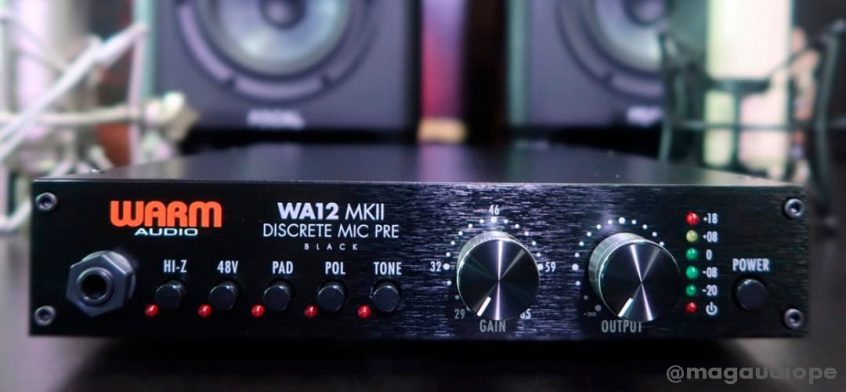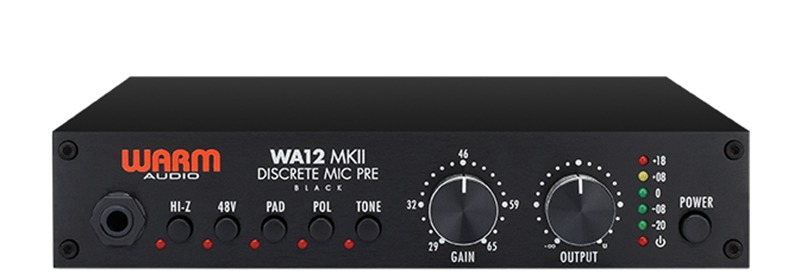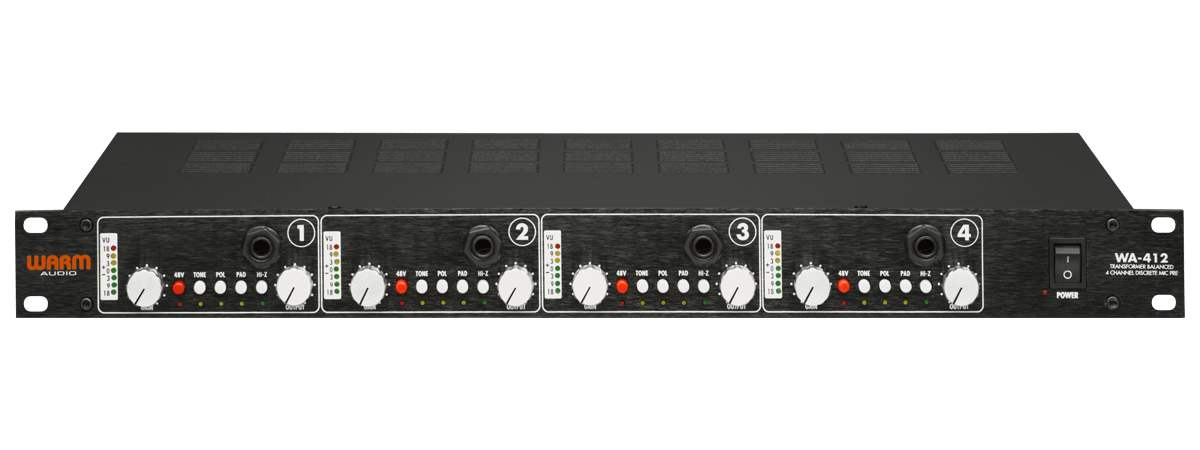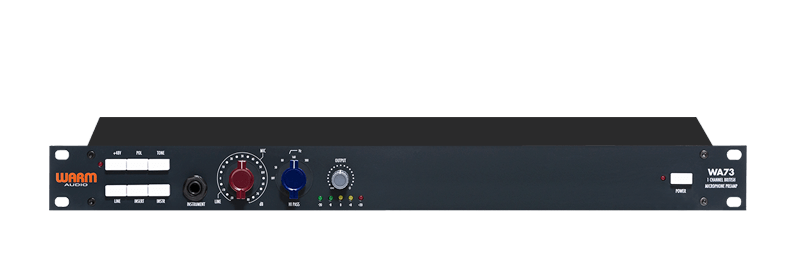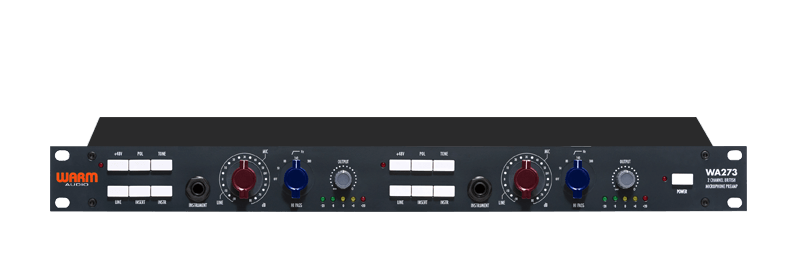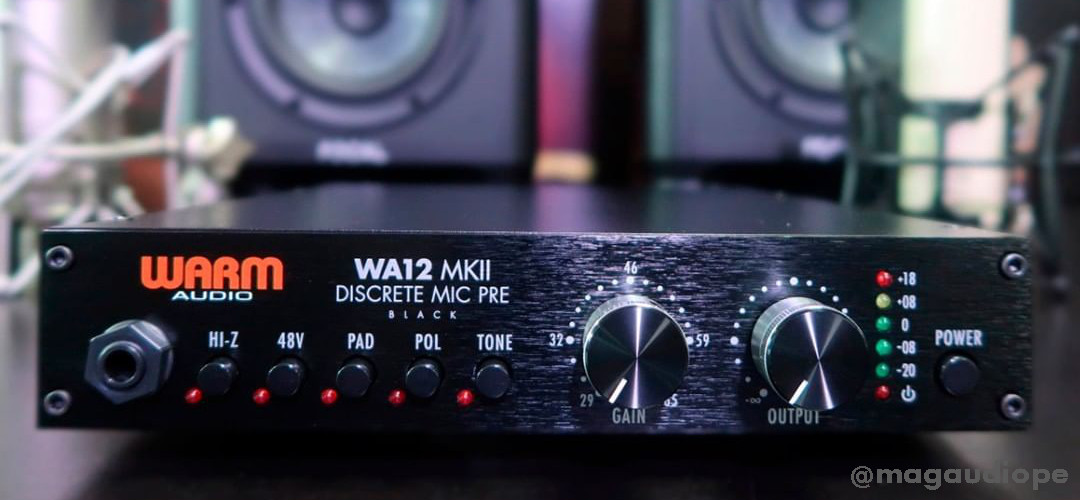
How to Choose a Microphone Preamp
What You Need to Know To Capture Your Best Sound
Having the right microphone preamp and knowing how to use it is the first step in creating great recordings at home or in the studio. The mic pre is the source of your sound outside of your unique playing style, so loving the sound of your mic pre is no small detail.
Choosing the right microphone preamp to capture your sound starts with understanding what the mic pre can and can’t do for you. That’s why we created a quick guide to help you choose and use the right microphone preamp.
In this guide, we’ll cover how to choose a mic preamp based on your sources & setup and provide a few examples. We will also talk a bit about gain staging basics to make it easy to pair your preamp of choice with other outboard gear.
If you’re looking for a basic overview of mic pre functionality and its role in the signal chain, check out our beginner’s guide for better recordings.
Preamp History, Sound Profiles, & Examples
Right out of the gate, we’ve got to consider what we’re going to record and what sound we’re trying to achieve. Understanding what instruments or sources we are going to record and what our preamps do well will help us to choose the right tools for the job.
Everything we add to a signal path has a sound profile, preamps especially so. Some preamps are designed to be deliberately “clean” where the only benefit we receive is more volume. Many “lifter” products and active DI’s aim to achieve this sound. For professional analog recordings, we usually seek a little more color and vibe out of our preamps.
A Little History
Like so many things in music gear, the most sought-after preamps have distinct origin stories and history that play deeply into the preferences of the engineers and artists that use the gear. Let the great debate begin!
Mid-50s American “351-Style” Tube Preamps: History & Sound
Sound profile: Clean Gain To Full Tube Saturation
Long before we had 48-track, solid-state mixing consoles or 24-track tape decks, we had basic reel-to-reel tape recording. Audio signals hitting those tape units required preamplification, and the state-of-the-art tech solution of the time demanded the raw power of vacuum tubes. The 351-style pre is known for being very powerful with tons of headroom, boasting 300v and 90dB of gain per channel. All this power translates to a preamp that handles quieter sources, like ribbon microphones or underpowered dynamic mics with absolute ease. When pairing 351-style tube preamps with condenser mics, there’s so much gain available in the signal chain that you have the ability to achieve high-headroom clarity, and supersaturated tone - even to the point of natural distortion and compression. This makes a lot of sense when you consider how great old recordings from artists like Roy Orbison, Nat King Cole, Les Paul, and Elvis Presley sound - there’s no compression on many of those songs because auxiliary compression wasn’t needed! With all of this gain on tap, you certainly have high headroom as mentioned, but today’s recordists are encouraged to experiment with input and output levels to achieve amazing distorted tones as well. Dialing in a little harmonic distortion and clipping can be just what a track needs to stick out in a mix.
351-STYLE AMERICAN-VOICED PREAMPS:
WA-MPX

Single-Channel Tube Mic Preamp
WA-2MPX

Dual-Channel Tube Mic Preamp
Late-60s American “12-Style” Preamps: History & Sound
Sound profile: Punchy, clean-to-mean
A distinctly “American” flavor, the “12-style” preamp was developed by API in Chicago for recording consoles in the late 1960s and those consoles were featured on some of the most famous albums from the 70s and beyond. Compared to older preamps in circulation, the 12-style preamps add color much “slower” than say, the 73-style British preamp or earlier American tube preamps from the 50s. What that means is that the 12-style preamp has more clean headroom before the extra sound coloration from the transformer hits. This does not mean that a 12-style pre has no analog color! Compare the sound of a discrete 12-style pre to some “clean sounding” preamps or inferior interface preamps, and you will be shocked at the punch, warmth, roundness, and space added by the circuit. Drums, bass guitar, vocals, acoustic guitar, and many sources benefit from the percussive, clean headroom from 12-stye preamps.
12-STYLE AMERICAN-VOICED PREAMPS:
British “73-Style” Preamps: History & Sound
The famous “British Console Sound” was created and perfected by Rupert Neve throughout the 1960s in Cambridge and later in Little Shelford, England. By 1970, the very first solid-state console featuring this timeless preamp was commissioned for a major London studio and the rest is history. Offering an unheard of 80dB of solid-state gain, the 73-style preamp is known for its beautiful coloration coming from not one but two input transistor gain stages as well as the incredibly low noise floor. The distinct Class-A gain staging of the 73-style preamp is still a favorite for many engineers today despite the decades of audio and electronic innovation since the introduction of this preamp. The 73-style preamps are known to color the signal earlier and impart more depth and space to the sound source compared to more punch from the 12-style American-inspired preamps. Open and spacious sounds in lead vocals, drum room mics and overheads, acoustics with wide stereo image all come to life with the depth and space offered by the 73-style preamp sound.
73-STYLE AMERICAN-VOICED PREAMPS:
SPOILER ALERT: When choosing between professional preamps built with quality components, there isn’t necessarily a ‘better’ preamp for a particular source. It all depends on the results you are trying to achieve. Knowing that things change from song to song, and source to source, there will likely be different preamp and mic pairings that will help you get the sound in your head. Now that we’ve covered the basic history and sound profile, let's look at some example applications and see how one of these preamps might help bring out the most in a particular performance.
Examples
Let’s look at how we could use certain preamps to achieve desired sounds by enhancing attributes of our performance and songwriting.
Example Setup: Acoustic singer-songwriter
- Sources: Lead vocals, acoustic guitar
- Associated gear: computer & DAW, 2-4 channel interface, 2-3 condenser mics, cables
- Preamp recommendation: American 12-style preamp / WA-TB12 ($649)
Why this recommendation?
If you’re recording intimate vocals and acoustic guitar, you want to be sure that you leave room for the vocals and guitar to shine and step back where appropriate. Mixes with lower track counts can benefit from the added clarity and clean gain options the American 12-style preamps provide. For a minimalist setup, like tracking one source at a time, one 12-style preamp should cover you. If you prefer a more live feel, use two for 2 channels of high-quality and versatile mic pre’s running at the same time.
BONUS: If you want the live feel of two TB12’s but also prefer recording acoustic guitar with 2 mics simultaneously, consider adding a preamp like the WA12 MKII ($469) on top of the dual TB12’s. The WA12 MKII easily sits on top of your desk without needed racks for 2 channels of console-grade preamps running at once.
Example Setup: Piano and keys
Why this recommendation?
Not many sources span the tonal spectrum like pianos and keyboard sounds. Since this source has so much variance, you need a preamp that is very versatile with tonal options ranging from “clean” to “very colored.” If you need a “clean” grand piano-like sound, the 73-style British preamp has plenty of depth and air to bring articulate performances to life - best for solos or performances where the piano tone needs to stand out. If you’re looking to impart more analog warmth to your sound, driving the 73-style preamp by raising the gain will engage the transformers which adds that classic console sound to any keyboard parts, letting them sit just right in a mix.
BONUS: If you want the ultimate experience in tone-tweaking your signal on the way in, consider instead a WA-273 EQ. The 273 EQ adds a three-band EQ section that is easily bypassable entirely or by each frequency-range if needed.
Example Setup: Multitrack drums
- Sources: Acoustic drums (8X tracks)
- Associated gear: computer & DAW, 8-12 channel interface, mic & TRS cables
- Preamp recommendation: (2X) WA-412
Why this recommendation?
It’s no secret that you can come up with a killer drum mic sound with only 3 microphones. But many drummers and engineers like the added flexibility of miking each individual drum if possible. Using two WA-412’s gives you two main benefits.
First - the WA-412 has the classic American, 12-style, high-headroom, analog warmth that you would expect out of discrete console-grade preamps.
Second - this setup allows the user to put one mic on each piece of a standard 5-piece kit with added hat and overhead mics. Things get even more creative on a 4-piece kit, where you can experiment with top/bottom snare mic techniques, far room mics, or outer kick drum mics. This 8-channel solution is a fantastic way to get classic, console-grade drum sounds for most setups.
BONUS: If you have the mics + interface inputs and you really want to take your drum sound to the next level - consider adding a WA-273EQ in addition to the WA-412. This will give you an alternative preamp sound that is more wide and warm, mixing vintage and modern tones for exceptional drum sounds. With this additional preamp, you could add and pair a far room mic on the drums with a snare top mic going into the 273EQ. The added EQ lets you treat each mic differently and also gives you the flexibility in case you want to swap your snare top/bottom for an external kick drum mic. Add just the right reverb and compression for a huge sound, making no compromises between live and studio sound on the kit.
Example Setup: Gritty Acoustic Guitar
- Sources: Mono Acoustic Guitar With Mid-Heavy Tonality
- Associated gear: computer & DAW, 2-4 channel interface, 2-3 balanced TRS cables
- Preamp recommendation: WA-MPX
Why this recommendation?
There are so many ways to mic, amplify, and process acoustic guitars on the way in, but a very common topic amongst budding engineers is how to get an intimate, gritty, woody tone. Starting with a mic that will accentuate those tones is best, opting for 47-style or 67-style mics that have richness in the lows and lower mids. The preamp to best bring these mics out is a WA-MPX. Using one mic, positioned somewhere between the soundhole and the 12th fret should give just enough “depth” to the guitar without adding the same “width” associated with a stereo setup. The WA-MPX should bring out the full character of the guitar, and the mic as well - with more natural compression from the tubes as you drive the input control on the preamp.
BONUS: If you really want grit, try engaging the “Tape Sat” and “High Gain” controls. The tape sat switch adds a discrete analog circuit designed to emulate the effect of recording to tape at 15IPS. The high gain switch gives you an added 20dB (from 70dB to 90dB) of gain for low-output mics and low-volume sources. When these two controls are combined, playing with the input stage should allow you to drive any mic to natural harmonic distortion that will be impossible to ignore.

